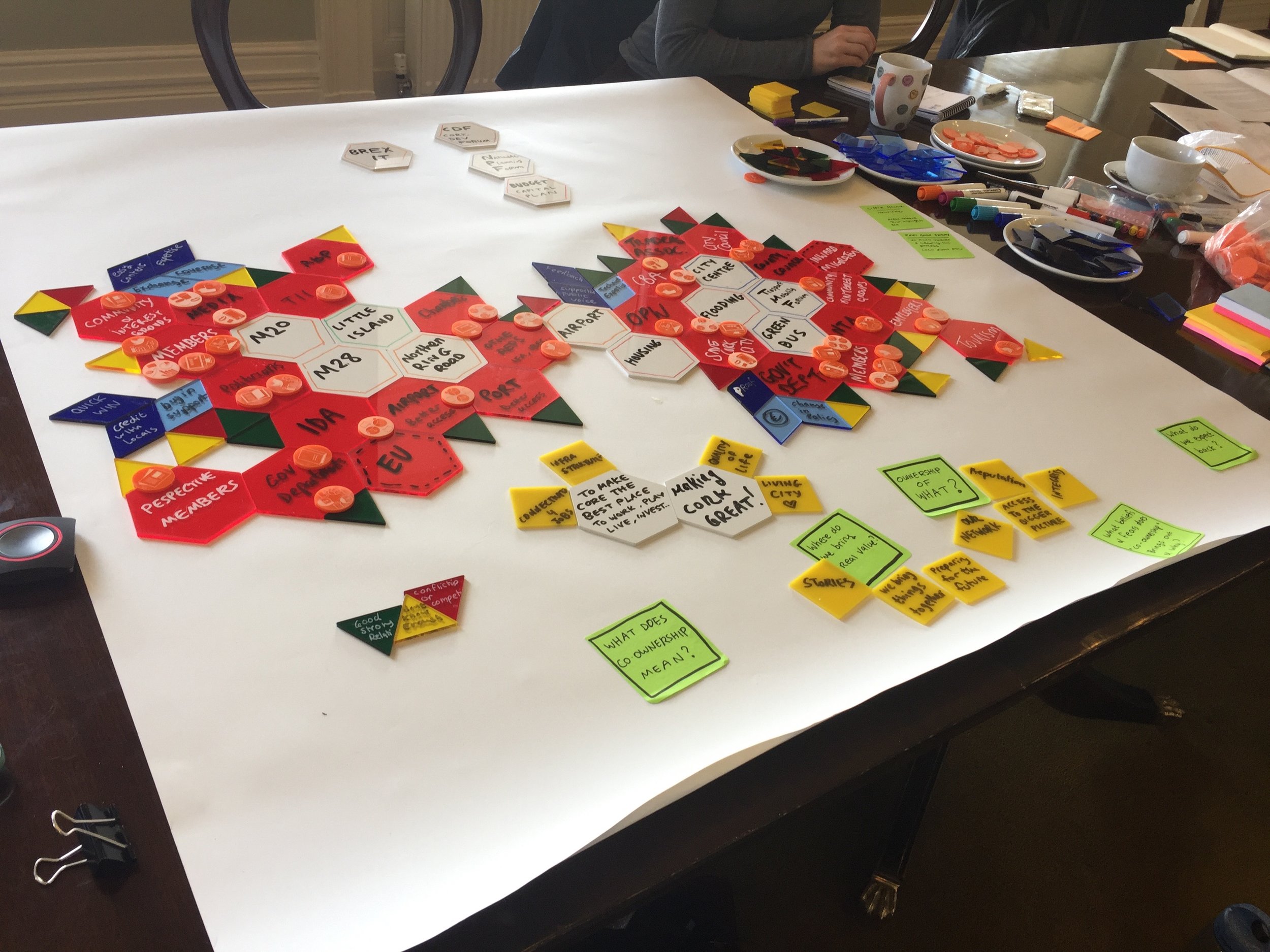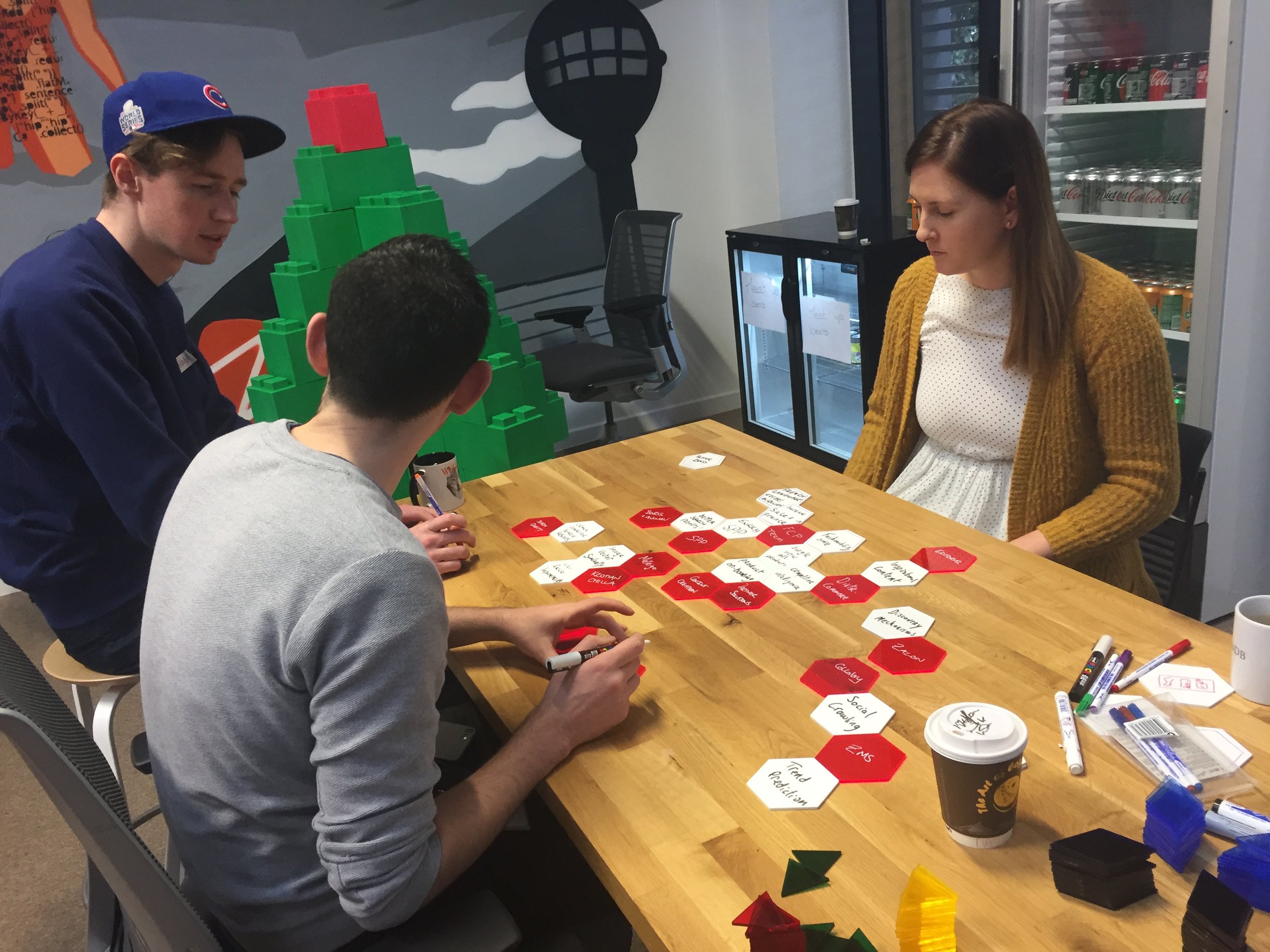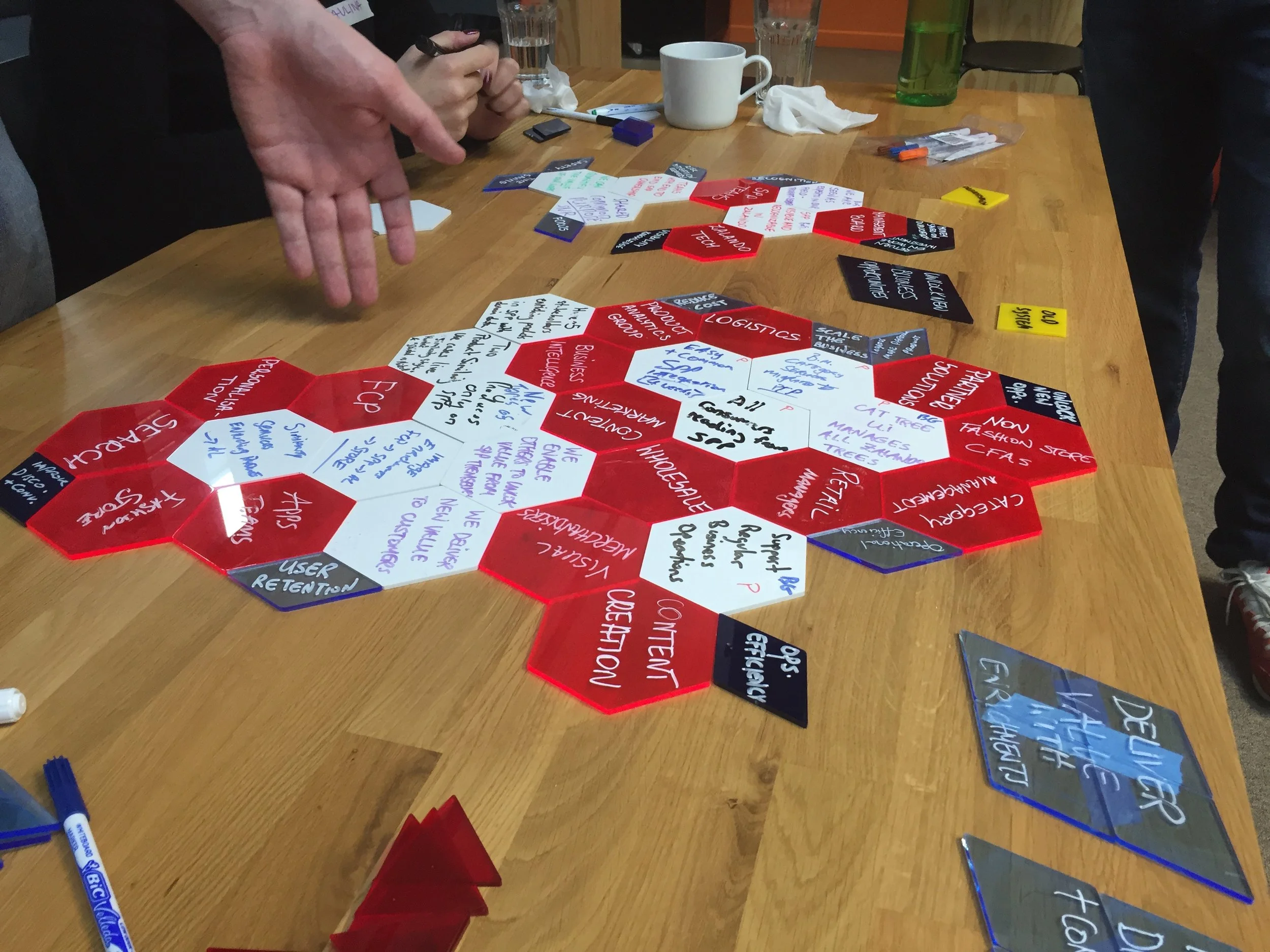Before Christmas we shared the ShapeScape’s 8 step process - the best way to execute your strategy. Many of your took time to read and comment.
Thank you for that! We love getting your feedback.
If you didn’t get a chance to have a look you can click here to view it online, or download your PDF version here.
Today, we’d like to share the top learnings we received from using the ShapeScape methodology with our clients in the past year.
First, What is ShapeScape?
ShapeScape is all about turning the complex system that strategy execution lives in, into a tangible visual map. Using the process we shared in the last blog, with diverse range of clients and strategies, produced some mind blowing insights on the power of visuals and physical games in the context of organisational change.
Before we share the learning, lets see the ShapeScape tool in action.
First we follow the first five steps using the shapes to create your strategy ecosystem map. When building the map we use a diverse range of designer tools to generate insights. We use proximity to show connections, size to show importance, shapes and colours to show meaning and relationships.
Using agreed rules the players are quickly able to apply and create their unique strategy ecosystem map. They follow the first fives steps of the ShapeScape process to complete the map:
They negotiate and clarify which of their strategic objectives and their associated KPIs are the most important.
Then, for each of the objectives and KPIs they add all the stakeholders needed to have on board in order to achieve success.
Focusing on the stakeholders, we discuss and agree what role they play and identify what are their motivations for supporting the strategy.
Still focusing on the stakeholders list, we assess the stakeholders’ position and attitude towards the strategy.
Last step in the mapping process - we list all the ways that our clients are currently engaging with their stakeholders using colours to signify direct interaction and indirect interaction.
And the map is complete!... so what's now?
After taking a nice long break, we spend time discussing and collecting the insights that emerged from the process, the discussions, and the patterns that emerged. At this step you can almost hear the pennies drop! When you have a visual overview, it’s remarkably easy to gain new insights, such as which stakeholders need to be prioritised, or where the quick wins can be found.
The last two steps help our clients move their insights into an execution plan. We use different methodologies to extract all the key actions while incorporating matrices that measure the effectiveness of the plan.
We have run this workshop with different clients from a diverse range of industries such as ICT, retail, finance, education and community sector. We used it with senior leaders, function teams and cross functional teams. Those experiences helped us to understand and optimise the tool.
What did we learn?
Here are our top learnings on why visual games are a brilliant tool to help with strategy execution:
The use of game interaction help the players move the negotiation process, required to arrived to shared agreement, from a non-structured, emotional led conversation, to a structured, logic based and consensus led process.
Many of our clients report that they find it extremely hard to allocate the required focused thinking time needed to reach decisions and take action.
Having physical interactions combined with a structured approach helps them to maintain their focus, complete their thinking process and avoid being the “busy fool”.
““Visual thinking means using our innate ability to see - with our eyes and our mind’s eye - to discover new ideas, develop them and communicate.” ”
Our brain processes visual information 60,000 times quicker than text. So by Looking at the visual map, players are able to process different aspects of their reality quicker, using more areas of their brain. This helps them find new perspectives, reveal new insights, and make new connections that were not available to them before.
Why not try it for yourself?
You can use pen and paper to draw a mindmap of your strategy ecosystem or get your hands on colourful post-its to make it more playful.












